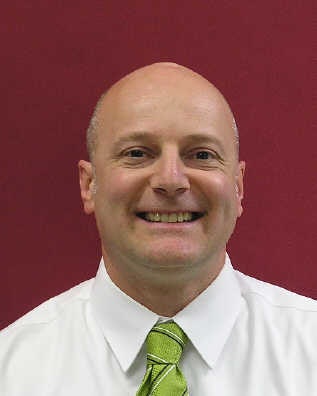Facing a national shortage of early childhood educators, the Community College of Vermont (CCV) and the Southwestern Vermont Medical Center (SVMC) have teamed up for an innovative solution: paying students to reduce their hours at their jobs in favor of taking more classes. The goal is to make students, many of whom work while attending school part-time, more likely to complete a credential while putting new workers into the pipeline more quickly.
 Dr. Eboni Zamani-Gallaher, associate dean of equity, justice, and strategic partnerships at the University of Pittsburgh School of Education and executive director of the Council for the Study of Community Colleges
Dr. Eboni Zamani-Gallaher, associate dean of equity, justice, and strategic partnerships at the University of Pittsburgh School of Education and executive director of the Council for the Study of Community Colleges
The Early Childhood Residency Program allows CCV students to receive $3,500 towards living expenses for a term. To apply, students must write a short essay about how the funding would allow them to increase their course load. CCV and SVMC anticipate funding 8-10 applicants.
The money for the program comes from congressionally directed funds that the SVMC received through the Health Resources and Services Administration. The hospital received two tranches of money: one to expand their childcare center and one to increase the center’s staffing. The second tranche led to the partnership with CCV.
The program’s unique structure arose from discussions between the two organizations. SVMC’s initial idea was to fund scholarships. But CCV told them that there was already plenty of federal and state aid available to cover tuition and fees.
“Right now, students can access our programs in early childhood education at low or no cost,” said Dr. Leslie Johnson, an associate academic dean at CCV. “So, this program is removing one of the additional barriers that might prevent them from being successful.”
 James Trimarchi, director of planning at Southwestern Vermont Medical Center
James Trimarchi, director of planning at Southwestern Vermont Medical Center
“The challenge is that these people are working, so let’s pay ‘em to go to school. Let’s just tell them, quit their part-time job, and we’ll pay you, and you can take three, maybe four classes a semester,” he said. “This isn’t rocket science.”
It’s a simple, intuitive idea that Trimarchi believes could be replicated in many different regions and industries.
“The model of paying students to go to school, in particular to go to a local community college, could solve a lot of the labor pipeline [issues] across the country,” he said.
So why aren’t programs like this one more common?
One possible reason is money. For colleges, the cost of giving students scholarships may not be the same—the scholarship recipient may not have been able to pay for tuition anyway, and the incremental costs for things like professors and infrastructure doesn’t increase by much with a small number of additional students. Increasing the student body is likely to lead to more graduates and to more alumni donors down the line. Giving a student a grant of $3,500 for living expenses is money out the door.
Another reason is similar to criticisms of student loan forgiveness—that some think it’s unfair to give one group an advantage that groups in the past didn’t receive.
“[People say] ‘look, I worked hard. I put myself through school. Why are these other people getting living expense money when I didn’t?’” said Trimarchi.
A final explanation is that the idea of giving people money to not work can feel uncomfortably counterintuitive, although the students will be replacing paid work with schoolwork. The idea may raise some of the same objections that have been made to universal basic income—that it is de-motivating and promotes dependency. Trimarchi points out, however, that in this case, the aid is temporary and is meant to help students rise to a position in which they can better support themselves. He thinks that if the idea behind the program were more widely explained, many people would support it.
However clever the program, it’s unlikely to last past the spring semester, at least with SVMC’s involvement. The Congressional money for the program is unlikely to be renewed, and even if another source of funding could be found, SVMC says that it is not set up to manage the program long-term.
Nevertheless, the partnership will still provide crucial aid to students this year. And although it may be short-lived, Trimarchi thinks that the collaboration can still be influential.
“My hope is that the students are successful in a manner that encourages others to consider doing this program in the future,” he said.
Jon Edelman can be reached at [email protected].





















